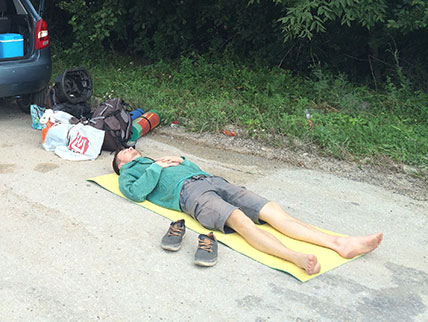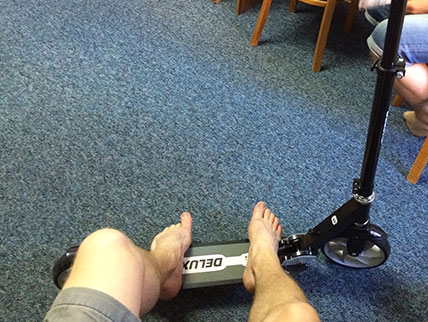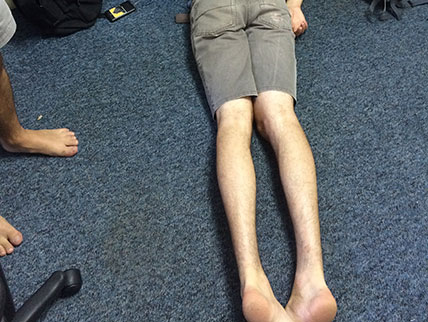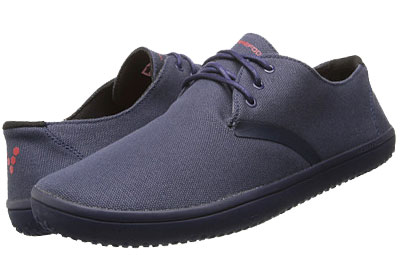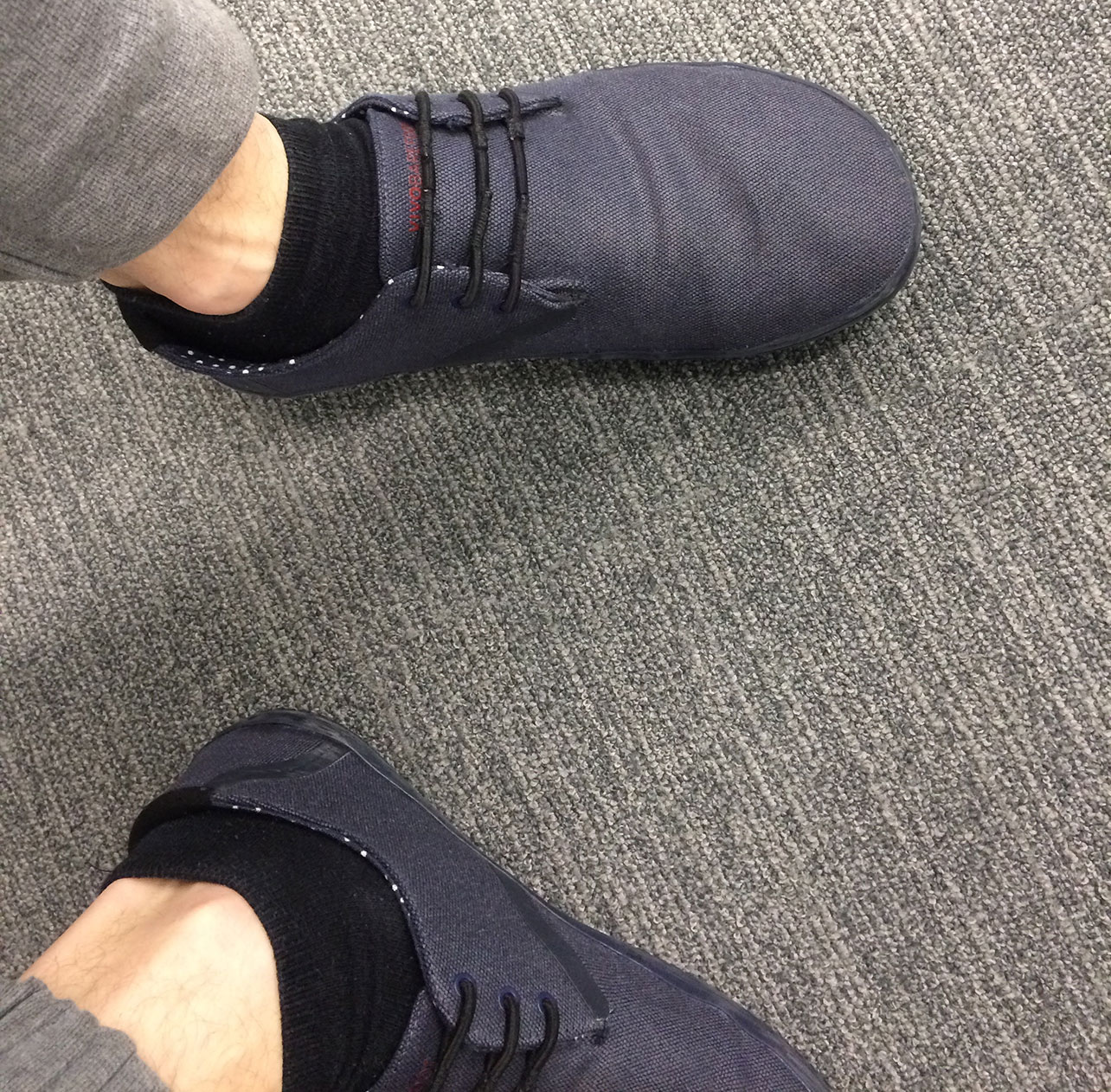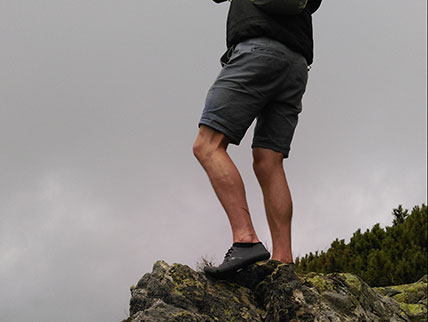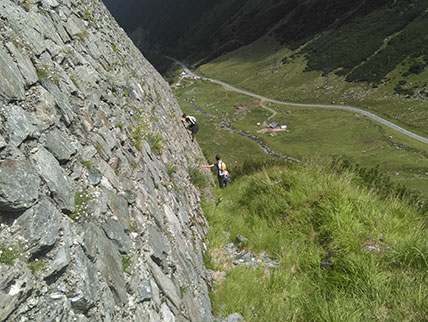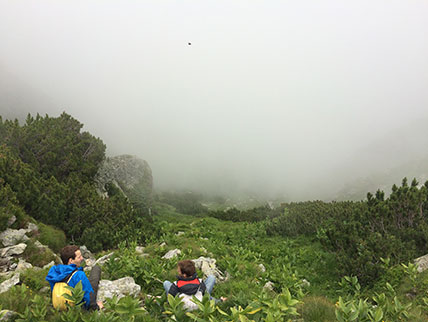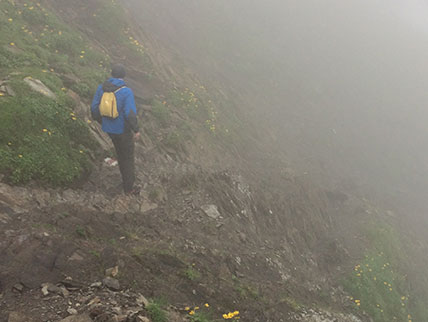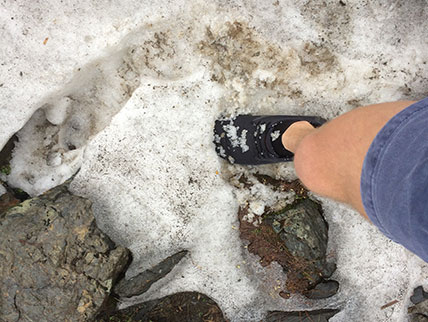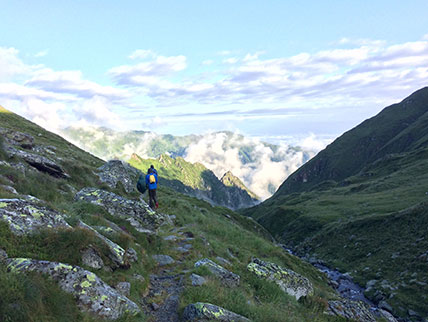The invisible gait problem
I love walking barefoot. That’s what many people would think of me. The truth is - I hate being in shoes. I still remember the feeling of coming home after a day of shopping, taking my shoes and socks off and then gently walking and rubbing my feet of the carpet. It was an insanely pleasant sensation.
DISCLAIMER: THIS WEBSITE DOES NOT PROVIDE MEDICAL ADVICE
The information on this website is for informational purposes only. It is not intended to be a substitute for professional medical advice, diagnosis or treatment. Always seek the advice of your physician or other qualified health care provider with any questions you may have regarding a medical condition or treatment and before undertaking a new health care regimen, and never disregard professional medical advice or delay in seeking it because of something you have read on this website.
Reliance on any information appearing on this website is solely at your own risk.
Foot symptoms
As most people (who wear shoes), I was wearing tight and non-flat shoes. Even running shoes were like that, although they felt less tight. This was causing:
- Discomfort in legs
- Standing or walking for prolonged times would cause fatigue or even pain
That doesn’t sound that bad. That actually sounded normal at that time. It was just one more thing that didn’t feel right, but because it always was like that - it didn’t bother me much.
The truth is that that list is just the tip of the iceberg, a somehow more complete list would be:
- Discomfort in legs
- Standing or walking for prolonged times would cause fatigue or even pain
- Compressing toes together
- Deformation of foot’s skeleton (because of pt.3)
- Calluses
- Increased sweating (because of pt.3)
- Increased chance of bacterial and fungal infections (because of pt.6)
- Degeneration of foot muscles (because of pt.3 and pt.4)
- Increased chance of ingrown toenail
- Incorrect gait
- Knee pain (partially because of pt.10)
- Lower back pain (partially because of pt.10)
- Decreased athletic performance (because of pt.4, pt.8 and pt.10)
- Bad posture (partially because of pt.10)
While it’s not an exhaustive list, these are more of primary and secondary symptoms that I experienced by myself in some form or the other.
Realization
Now that the list of issue is more imposing - it feels urgent that is has to be tackled. Well, I didn’t suddenly realize that there is a connection between all those things, or that there is a problem with most of them.
For some time I knew that my lower back is more sensible and that it sometimes gets unpleasant. But I thought that it’s solely because of my sitting posture. Also for last 15 years I was conscious of my gait, which I was often changing, but it never felt right, I just was getting used to whatever gait worked at that time.
What actually got me onto the right path was a constantly growing interest in barefoot shoes. Although I didn’t know the term, I was passively looking for shoes that interfere as little as possible with walking. I think I was more attracted to the idea of feeling the ground while walking than to any other possible benefits.
When I switched jobs and joined a new company, one of my colleagues was wearing barefoot shoes. I complemented him for that and he was talkative enough to tell me more about them, that they’re cool and where I could buy them.
I bought my first pair of barefoot shoes the next day. It was a pair of Vivo RA II M Canvas WP Navy. Because these are seasonal shoes, you’ll not find them on the website, but currently there are other RA models available.
First steps
The shoes I bought were for the autumn/mild winter season. They were coming with 2 pairs of insoles: thermal (insulated) insoles and normal insoles.

As it was London winter, I was wearing thermal insoles. First 2 weeks were interesting as with my normal gait I felt too much impact on my ankles and knees when walking.
But somehow I learnt to step more gently and the problem was mostly gone. When spring came and it was warm enough, I tried taking out the insole, but that felt too harsh again, so I replaced the thermal insole with the normal insole. That gave me a total of 6mm of shoe cushioning: 3mm from the sole and 3mm from the insole.
Hiking in mountains
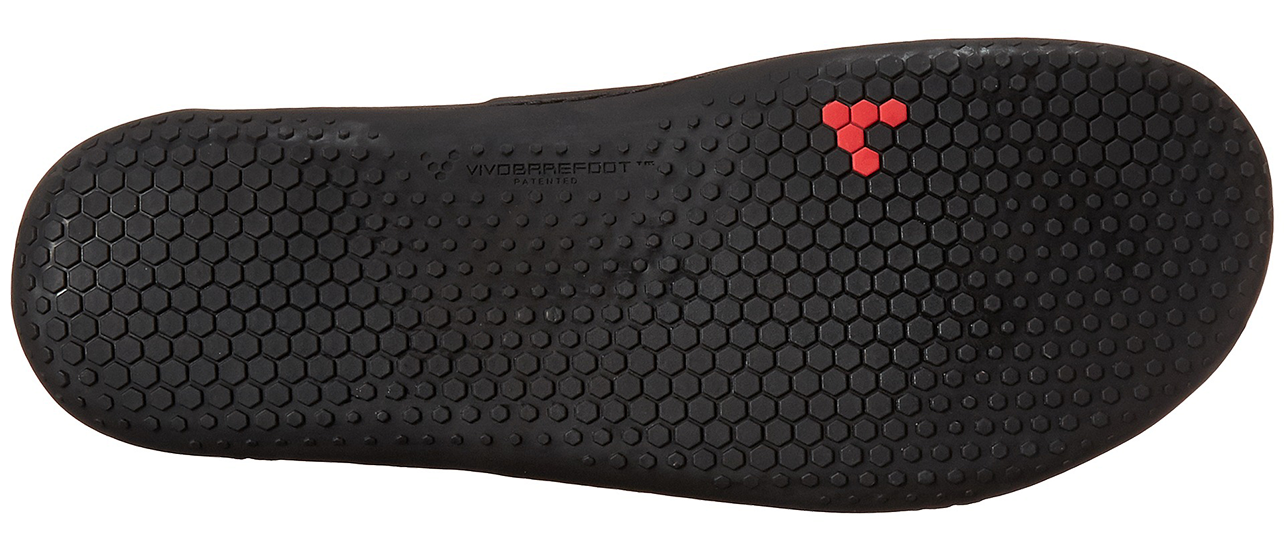
Fast forward 5 months of wearing barefoot shoes I decided to go mountain hiking in these shoes. Now you probably thought that it was a bad idea. Probably because of the:
- Absolutely no ankle support
- Very low grip
- Soft/flexible/thin sole
- Quite loose on the leg
In fact none of these things were an issue. You need ankle support only when you’re muscles are not trained and shoe’s sole is rigid. If the sole allows you to feel the ground and rocks you step on - you have more time to react, and it allows for better grip on any non-flat surface.
The actual issue was that it did rain on first night and second day. So after 20 minutes of walking through the grass - my feet were completely wet. When the rain started - I could feel the watter inside. But that day I didn’t see a single person with dry feet (out of 20+ people that we met at camp).
Because of that, I decided to take my insoles off as they were serving more of a sponge full of water instead of something that would provide comfort. After that I never put back insoles into my shoes.
Hitting my ankles with a hammer
Now with even less cushioning provided by shoes I started feeling again that my gait is not really correct. Sometimes when landing my foot on the ground I’d feel as it would first hit my ankle with a hammer and only after that the foot will come to a rest. That’s basically the feeling that you get when you walk barefoot if you’re used to land on your heel with your ankle in front of your knee. As I later found out - it’s called ankle-striking.
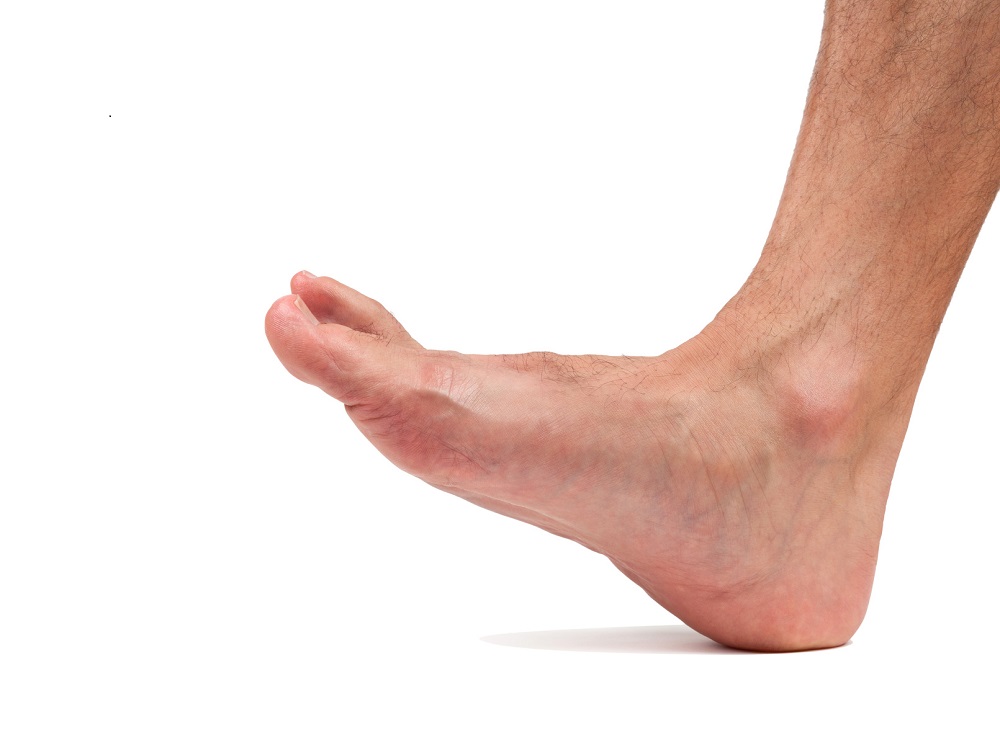
After some time I finally accepted that this is an important enough issue to give it some attention. I just wanted to know what’s the correct gait. And that led me into a sequence of rabbit holes about squashed toes, feet exercises, how to run barefoot and gait.
Squashed toes issue
I always knew that my pinkie had a tough life. Little I knew that all toes had to suffer because of the tight shoes.
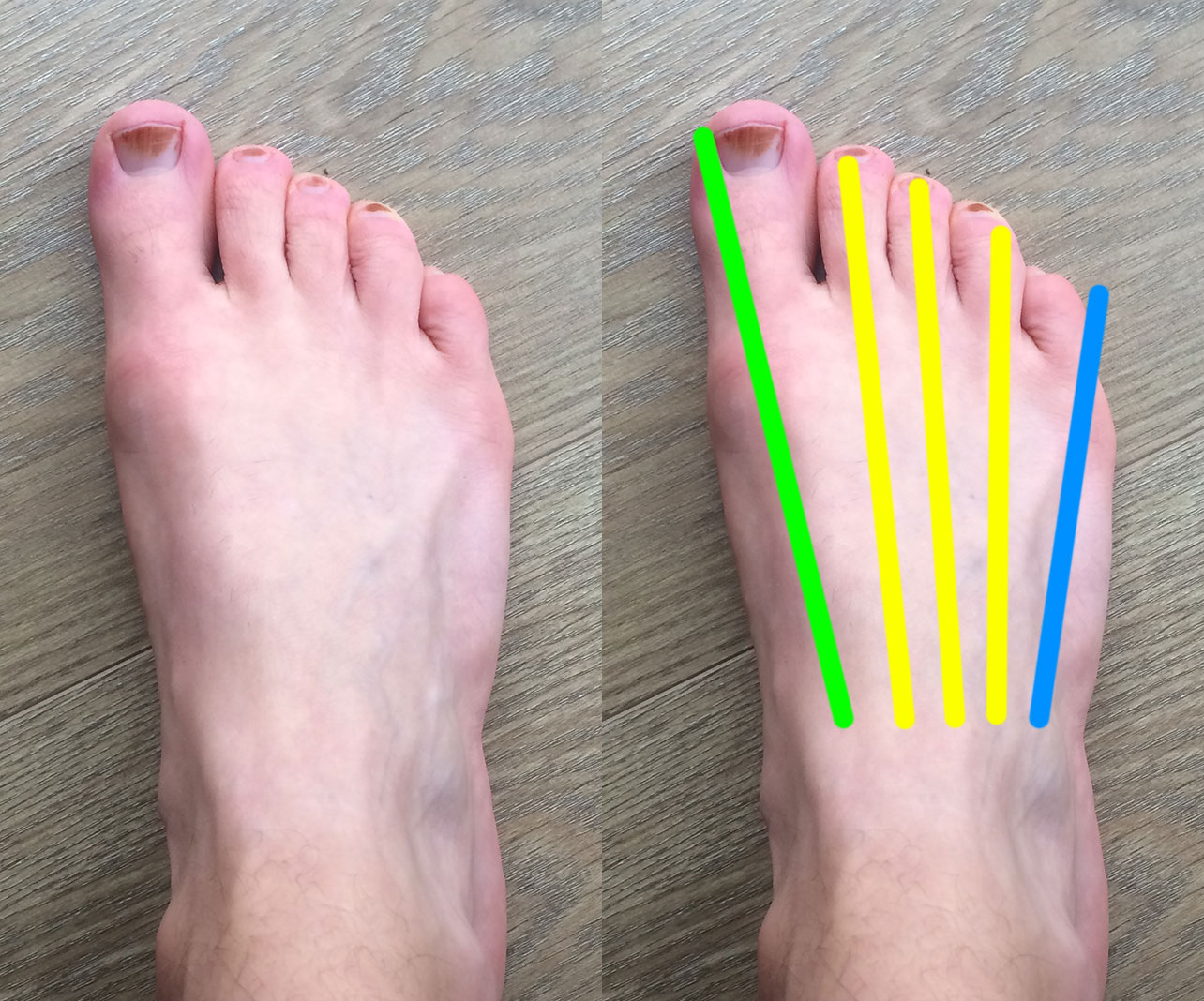
You can see how my toes are, and where in fact they should be. It’s quite easy to know what the correct position of the toes is - your forefoot bones should be each in a straight vertical line.
Or an even easier visual test - there should be quite some space between your big toe, 3 middle toes and pinkie, like this baby has:
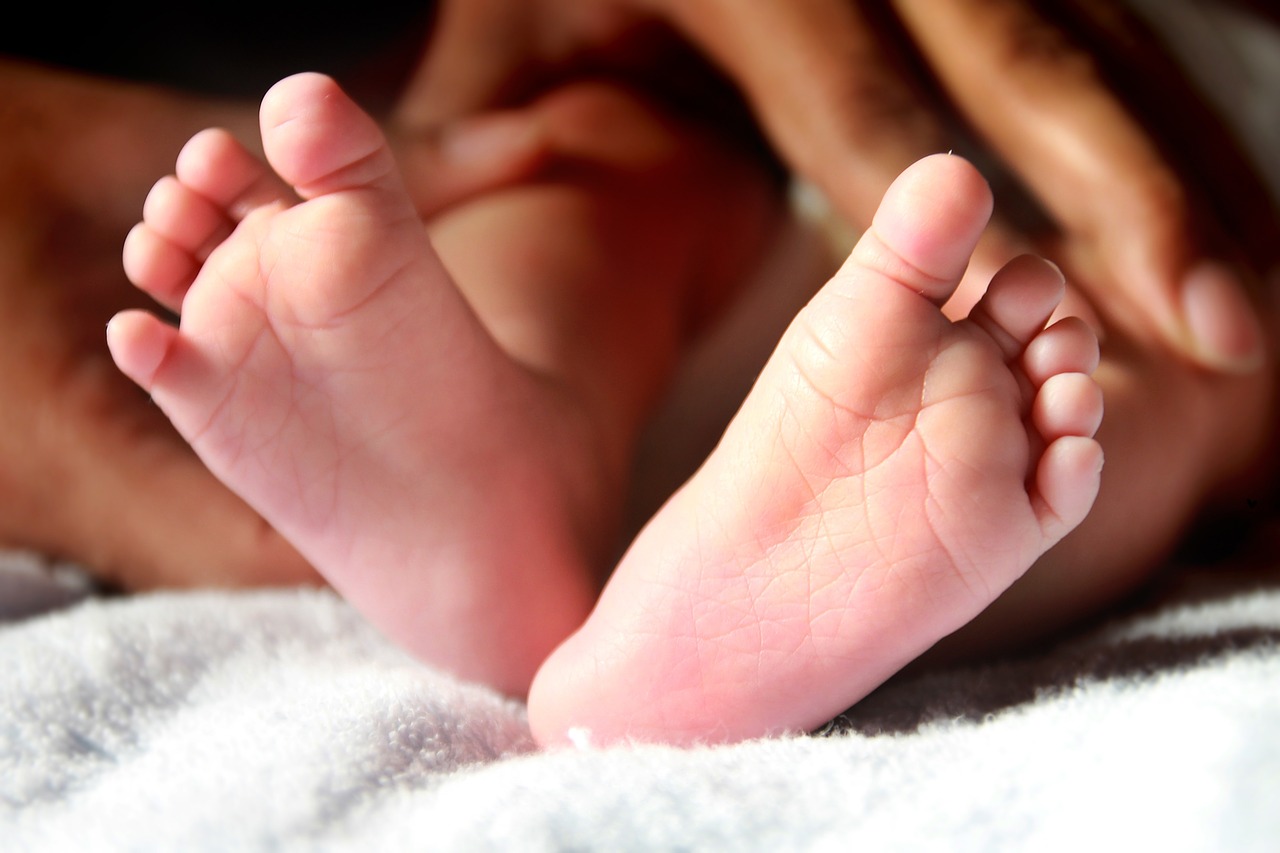
Because of the narrow shoes and toes being together - it’s really hard to use your toes when walking. I often caught myself trying to step in such a way so that my toes would do the least effort. That leads to less efficient walking, only partial feet muscles use, faster muscles fatigue, walking with your legs in front of you and ankle-striking.
Here the solution is not that simple anymore. Because:
- You need shoes with enough space for your toes
- You need shoes that are very flexible
- You need shoes with flat sole
- You need to start engaging your toes while walking
- You need exercises or tools to spread your toes
- Develop a correct gait
So the step-by-step solution would look like:
- Get proper shoes. Here’s a huge list of shoes that will work and you can even find dress shoes. Or if you want to search by yourself - here’s what you should be looking for.
- Work on aligning your toes back. There are many ways, but the easies should be exercises and correct toes.
- Work on you correct gait: first a short article and then an entire video course with tasks.
Current stage
I’m still working on my toes spreading and my gait. It’s quite an interesting exercise, especially thinking about your gait while walking and trying to correct it.
As the disclaimer says - nothing in this article should be taken as an advice. But at least if you ever thought about any of the problems mentioned above - you may be mostly certain that it is a problem indeed, and there is a solution for that. And I hope that this article will be a head-start in search for a solution!
